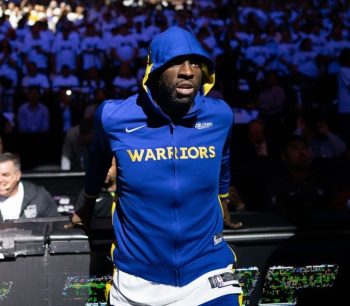NBA
Evaluating The Ignite’s G League Season

The G League season ended last Thursday with the Lakeland Magic winning the championship over the Delaware Blue Coats. By all accounts, the five-week, fifteen-game season has been deemed a success both from a logistical and basketball standpoint. Playing in an Orlando bubble similar to what the NBA did last season, there were no positive COVID-19 cases during the season. But from a basketball standpoint, around 225 players got to develop and showcase their skills for NBA teams.
What made this season unique is that it was the first season with G League Ignite, a team comprised of five draft-eligible high school players surrounded by professional veterans that made a career in the NBA, overseas or in the G League. But, honestly, a big reason the G League made such an effort to compete at all this year was to allow Jalen Green, Jonathan Kuminga, Daishen Nix and Isaiah Todd play.
Now that the season has ended, the league and fans can look back and ask if the program was a smash during the inauguration year?
The simple answer is that – until the 2021 NBA Draft and these prospects are drafted – it’s too hard to know right now. Without that information, the NBA and G League should be very happy with the program. Led by head coach Brian Shaw, the team was competitive throughout the season and spotlighted high school players with a viable option to play stateside without college.
In December, the Ignite played two exhibition games in California against a team comprised of G League veterans. The results were not pretty. Not only did they lose, but they also were not even competitive. It was not uncommon to hear NBA personnel comment that they didn’t think the Ignite would be able to win a game in the G League bubble.
Fast forward to February and the on-court was completely different. Not only did they compete, but they won games. The Ignite started 4-0 and the young, draft-eligible players impressed more than people thought. The jump from high school basketball to the G League cannot be understated. Up against driven, talented and hungry players that are fighting for their big chance, a target was put on this team and they responded.
Jonathan Kuminga stood out early and showed why his combination of size, athleticism and skill make him a tantalizing NBA prospect. Of course, he struggled towards the end of the season and was not able to play in the last three games due to injury. The platform was great for him though, and he has all but solidified himself as a top-five pick, where he could end up going as high as No. 2 overall.
Jalen Green, the player who was considered the top prospect going into the season did the opposite. He started off slow and progressed exponentially as the season went on. Front offices had to be happy with what they saw as a scorer, facilitator and the way he never lost his composure, even when things did not go his way.
Nix and Todd both played up and down during the season – but overall, they progressed as the season continued and put themselves in a good position for the draft.
The G League did a great job of surrounding the team with veterans who could mentor them on and off the court. These players included Jarret Jack, Bobby Brown, Brandon Ashley, Amir Johnson, Donta Hall, Reggie Hearn, Cody Demps and Jessie Govan. While the attention from fans and the media was on the draft-eligible prospects, these players also tried to prove that they can play at that level. Even better, halfway through the season, Donta Hall was signed to a 10-day contract by the Toronto Raptors.
While individual player development is the priority, these players are professionals and competitive – simply put, they want to win. The Ignite surprised a lot of people by making the playoffs as the No. 8 and final seed. While they fell in the first round, making the playoffs in their first year after being expected to be one of the worst teams was a great accomplishment.
Ultimately, the G League deserves credit for how well this team did. In the Ignite’s case, specifically, these players developed as the season went on and they exhibited their future ability to contribute at a higher level. Given how many things could have gone wrong this season, very few things did. Top high school players should legitimately consider this route if approached by the G League – and, given the organization’s track record, it’ll only get better as it progresses.













